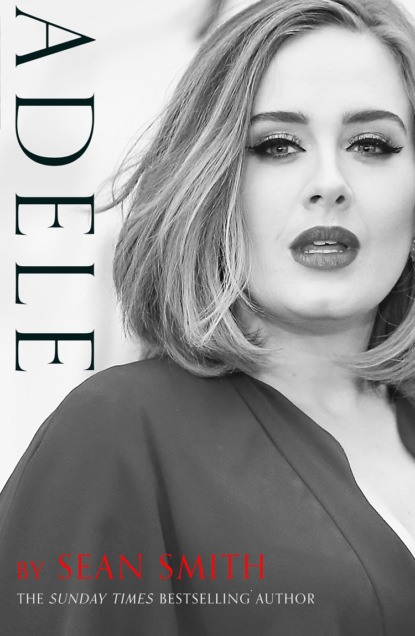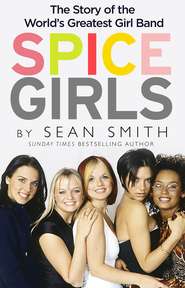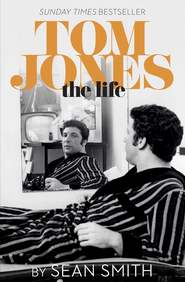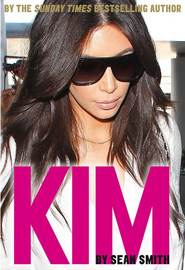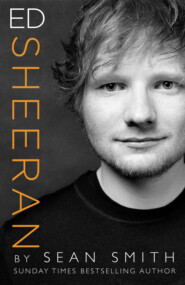По всем вопросам обращайтесь на: info@litportal.ru
(©) 2003-2024.
✖
Adele
Настройки чтения
Размер шрифта
Высота строк
Поля
They were almost polar opposites as stars. Nick Williams observes, ‘The one thing Kate and Amy have in common is that there isn’t anyone exactly like them. They’re not factory farmed. What we do is attract people into the school who are creative – that means things will happen.’
Superficially, Adele was treading a similar path to Amy. Both were working-class girls from North London. Amy’s father Mitch was a taxi driver. Both were influenced in their vocal style by black big-band singers: Adele by Etta James and Ella Fitzgerald; Amy by Sarah Vaughan and Dinah Washington. And both wrote songs that honestly conveyed love and loss – as the title declared, they were both frank. Adele was nearly five years younger than Amy, and her personal life had still to develop, but the choices she made were never remotely as bad or shambolic as the ill-fated legend.
If you were in the mood for angst-ridden reflection, you wouldn’t choose the romantic sounds of Katie. For Adele, it would always be Frank, an album she admired hugely, claiming it was this ‘amazing’ record that ‘made her pick up a guitar’. That statement shouldn’t be taken too literally. Adele gushes about so much music, it can be difficult sometimes to find something that she doesn’t like.
She could, of course, already play the guitar, but it would be increasingly important to her when she took writing songs more seriously. That coincided, at sixteen, with becoming a full-time music student. Eighty per cent of her school time would be devoted to music once she waved goodbye to the national curriculum.
Although she had no trouble with her GCSEs and had achieved a distinction in her music GNVQ (General National Vocational Qualification), she still had to go through another audition process at school in order to be allowed to continue at what was its equivalent of a sixth-form college. If accepted, she would study for a BTEC qualification in music. Existing students, like Adele, were competing with a fresh set of applicants from outside. Fifty places were available to 400 hopefuls.
Again, Liz Penney was in charge of the audition, but other teachers were on the panel this time, which made the process more nerve-racking. They listened to Adele sing before she joined rival students to sit a written exam on ‘When I’m Sixty-Four’ by The Beatles. Two weeks later, she was relieved to learn that she had been accepted, although in her case it had been a formality.
The very first day of what was, in effect, a new school, clearly demonstrated that Adele had a fresh determination about her and provided a rare insight into the character and dedicated mindset that would sometimes stay hidden behind her larger-than-life image. The music students were now split into two classes of twenty-five. Each of them, in turn, had to get up and perform something – a guitar solo, violin piece, saxophone break, some jazz on the piano. Adele sang, of course. One of her classmates remembers, ‘She did a great performance and then sat down in her chair and was furious because she thought she had done a really bad job. That was our very first day performance.
‘Adele was kind of, you know, an absolute perfectionist. She always had one thing on her mind and that was succeeding over anything else – over social life, over everything like that. That was her main focus.’
Adele has given the impression that she had a carefree attitude at the BRIT School. In reality, that was not the case.
In the canteen, there was a jukebox that had an eclectic mix of 45s for the students – anything from the Beach Boys to Mary J. Blige and Will Young.
One of the favourites during Adele’s first senior year was a forgettable pop song called ‘Leave (Get Out)’ by American singer JoJo. Whenever the track came on the ‘artists’, as Stuart Worden liked to call the students, would break into song.
Everyone seemed to know the words of this particular cheesy break-up song about a cheating dog of a boyfriend, especially the anthemic chorus. One of Adele’s friends and contemporaries observes, ‘It was a bit like Glee but less contrived. It was just a case of jamming together – all of us. It was a very creative place.’
Adele would join in, as would another shining talent, a fantastic dancer and actress called Jessica Cornish, from Romford. At the BRIT School she was known as Jessica, although some of her class in musical theatre called her Jess. Now the whole world knows her as Jessie J.
She wasn’t a bit like the superstar we all know today. One of Adele’s smoking buddies recalls, ‘She was very, very quiet. She would sometimes come and stand in the music room during breaks and stuff. I often thought it was a bit strange, because she was so quiet all the time and didn’t make much of an impact. It’s really weird to see her now; how big and confident and out there she is, because she wasn’t like that at all. Adele, on the other hand, comes across very much as she did at school.’
In fairness, Jessie J was one of those students who lit up like a streetlamp when she was performing. She was already a practised performer in West End musicals, including the role of Brat in Andrew Lloyd Webber’s Whistle Down the Wind when she was eleven. But, although she was a very fine singer, she wasn’t as accomplished vocally as a specialist like Adele.
Jessie J literally found her voice at the BRIT School. She had to change from being a stage singer to being natural and relaxed in front of a microphone. She explained in her autobiography that her time as a student was all about ‘gaining confidence, character building and finding out about myself’.
She and Adele did know each other at school, but weren’t part of the same set. Occasionally, they would join forces in the canteen for a little jam and a song. Sometimes Ben Thomas would play guitar. Jessie J recalls those times with affection: ‘We’re so common when we’re together. It’s hilarious.’ Best of all, she remembers the Adele laugh, which already was becoming her trademark: ‘You could hear her laugh from a mile down the corridor. She was very kind of loud and everyone knew her, and she was the girl everyone loved and was up for a laugh.’
One of the myths about the BRIT School is that all its stars were there at the same time and all sat in a row in a classroom. Most of the better-known former students barely knew one another. Adele did know Kate Nash, whom she thought hilarious. She also knew future star Katy B (Kathleen Brien), who spent four years at the school, but specialised in theatre, in the year below. Soon after Katy joined the school, the Year 10s and the Year 11s were put together in groups for practical music classes. Adele and Katy were in the same group, although the older children would boss around the uncool newbies. When Katy was asked what she could do, she nervously said she could sing and proceeded to demonstrate that she could. ‘You can sing.’ Adele shouted to Liz, ‘Miss, she can sing!’
Adele didn’t remember The X Factor winner Leona Lewis: ‘That Leona Lewis must have been a quiet horse as I can’t remember her at all, and I know everyone there.’ In fact, Leona had already left by the time Adele arrived. Only Jessie J, of the more famous alumnae, was in the same year.
Liz Penney, who was the musical director for her end-of-year show, the musical Sweet Charity, recalls that she cast Jessica as Charity: ‘She was an incredible performer. But she was like Adele in that she wanted to learn. She would watch me do a vocal warm-up before her class and, at the end, she would be the one who came up to ask me to show her again so that she had it right. She was the consummate professional – and so was Adele.’
Both Adele and Jessie J thrived in the relaxed environment of the BRIT School. Jess is famously bisexual and there has never been any indication she hasn’t been comfortable with her sexuality. Adele has surrounded herself with many gay friends and can be camp in a theatrical way, made charming by her persona as the cheeky chapette from Tottenham.
A mutual gay friend explains, ‘It was all to do with making the space comfortable and safe. It wasn’t a big thing to come out at the school. There were just as many gay boys as there were straight boys – and gay girls as there were straight girls. For the first time, you were able to look around and think, oh, I could date you and I could date you.
‘You had the freedom to develop as a person and that is hugely important in creative arts. It was such an eclectic range with great personalities but no edge. Some of the people were suburban and some of them were real London urban kids with no money, did terribly at school but had an amazing singing voice or could draw like no one else could draw, an amazing graffiti artist or a brilliant actor.
Вы ознакомились с фрагментом книги.
Приобретайте полный текст книги у нашего партнера:
Приобретайте полный текст книги у нашего партнера:





